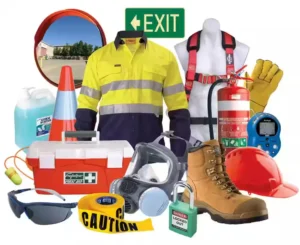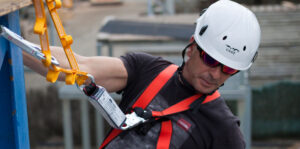Introduction
In high-risk environments like electrical and power industries, personal protective equipment (PPE) is more than just a regulatory requirement, it’s a life-saving necessity. Among the most critical components of this gear is the safety helmet. Often underestimated, this simple piece of equipment plays a vital role in protecting workers from life-threatening injuries caused by falling objects, electrical arcs, and accidental contact with energized components.
The electrical and power sectors are environments where danger can strike in an instant. With complex machinery, high-voltage systems, and elevated workspaces, the risk to human life is substantial. That’s why safety helmets aren’t optional, they’re essential. In this blog, we delve into why they are non-negotiable for professionals working in these demanding sectors.
The Hidden Dangers in Electrical and Power Sectors
To understand the importance of head protection, it’s crucial to recognize the types of risks electrical and power industry workers face daily. These environments are filled with hazards such as:
- Arc Flashes: Sudden electrical explosions can release intense heat and light, posing a risk of burns, shock, and impact injury.
- Falling Tools or Equipment: Workers often operate in elevated areas such as transmission towers or electrical substations. A falling wrench or loose equipment part can easily cause severe head trauma.
- Low-Hanging Electrical Wires and Equipment: Unnoticed overhead wires or fast-moving robotic arms can lead to direct impact or electric shock.
- Contact with Live Circuits: Accidental head contact with exposed conductors can result in fatal electrocution if the helmet isn’t designed to insulate against electricity.
Given these dangers, ensuring that the head is well-protected is not a luxury, it is a matter of survival.
Key Features of Helmets Designed for Electrical Safety
Not all helmets offer the same protection, especially in high-voltage environments. Workers in the electrical industry require specialized helmets designed to shield them from both physical and electrical hazards. Here’s what makes a helmet suitable for these roles:
1. Electrical Insulation Capabilities
A standard hard hat won’t cut it when working around electricity. Helmets used in these sectors must be non-conductive and meet specific standards. For example:
- Class E (Electrical) Helmets: Certified to withstand up to 20,000 volts of electrical charge, making them ideal for high-voltage work.
- ANSI/ISEA Z89.1 Compliance: This American standard classifies helmets based on their level of electrical protection and impact resistance.
- EN 50365 Compliance (Europe): Helmets must be tested for protection against electric shocks and short circuits in low-voltage installations.
These certifications ensure that the helmet offers adequate protection from both electrical and impact hazards.
2. Impact and Penetration Resistance
Helmets must be made of durable materials like high-density polyethylene (HDPE) or ABS plastic to absorb the force of falling objects or collisions with heavy machinery. A quality helmet will include:
- Shock-absorbing Suspension Systems: Distributes the force of impact across a broader area to reduce localized injury.
- Chin Straps and Secure Fitting: Ensures the helmet stays in place during sudden movement or falls.
3. Additional Protective Features
Many modern safety helmets now include extra features designed for utility workers, such as:
- Visors and Face Shields: Protect the face from arc flashes and flying debris.
- UV Stabilization: Essential for those working outdoors in power line installation and maintenance.
- Ventilation Systems: Enhance comfort during long shifts, especially in hot climates.
These features not only add layers of protection but also improve worker comfort and productivity, reducing the likelihood of non-compliance.
Real-World Impact: Incidents and Prevention
There are countless cases where proper use of safety helmets has saved lives. For instance, utility workers who suffered arc flashes have reported minimal injuries thanks to their Class E-rated helmets. In contrast, many avoidable fatalities in the sector can be traced back to either poor-quality helmets or lack of helmet use entirely.
According to OSHA, head injuries account for nearly 6% of all occupational injuries in power-related jobs. Most of these injuries could have been avoided had appropriate PPE been worn. This reinforces that helmet use isn’t just recommended, it’s mandatory.
Conclusion
In the electrical and power industries, safety is not a secondary consideration, it is the foundation of every task. Safety helmets serve as the frontline defense against head trauma, electrical hazards, and unforeseen incidents that could otherwise prove fatal. As technology advances, the industry now has access to helmets that are smarter, stronger, and more comfortable than ever before.
Choosing the right helmet involves more than checking a box, it requires a careful assessment of the hazards involved and the certifications needed. Employers and workers must remain vigilant, prioritizing helmet use on all job sites and ensuring the equipment is regularly inspected and replaced when needed.
For professionals and companies operating in high-risk electrical environments, investing in certified, high-quality helmets is a step toward building a safer, more responsible workplace. When lives are at stake, safety helmets aren’t negotiable, they’re non-negotiable.




